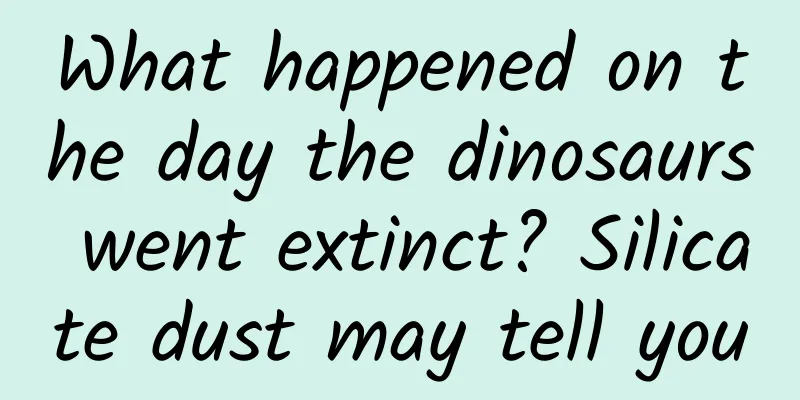What happened on the day the dinosaurs went extinct? Silicate dust may tell you

|
Science Times reporter Wu Tong A climate research paper recently published in Nature Geoscience, a professional academic journal under Springer Nature, believes that the fine silicate dust caused by the rock crushing when the Chicxulub meteorite hit the earth may have played a major role in global climate cooling and the destruction of photosynthesis. These may be one of the main reasons for the extinction of dinosaurs. Dinosaurs are a type of animal that lived between about 240 million and 65 million years ago and could walk upright using their hind limbs to support their bodies. The paper said that the Chicxulub meteorite impact on Earth has long been believed to have triggered a global cold winter 66 million years ago, leading to the extinction of dinosaurs and about 75% of species on Earth. However, there is still controversy over the impact of various debris ejected on the climate, and it is not clear what caused the mass extinction. Past studies have believed that sulfur released by the impact and smoke from wildfires after the impact were the main driving forces for the formation of severe cold, but people did not think that the size of silicate dust particles ejected into the atmosphere was the main factor. To assess the impact of sulfur, soot and silica dust on the climate after the Chicxulub meteorite hit the Earth, the first author and corresponding author of the paper, together with colleagues and collaborators, created a paleoclimate model based on the analysis of fine-grained materials in a well-preserved impact sediment in North Dakota, U.S.A. In their study, they found that the particle size distribution of silicate debris of about 0.8-8.0 microns indicated that the role of fine dust was greater than previously estimated. The authors input the measured particle sizes into a climate model and estimate that such fine dust could have remained in the atmosphere for 15 years after the Chicxulub meteorite hit Earth, causing the Earth's surface to cool by as much as 15°C. They believe that changes in solar radiation caused by the dust could also have stopped photosynthesis for nearly two years after the impact. The authors say the cooling effect of silicate dust, as well as soot and sulfur, would have hampered photosynthesis, allowing the cold to persist long enough to trigger a chain extinction reaction. |
>>: Double heartache: Does belly fat affect the brain?
Recommend
Will the strongest gamma-ray burst reveal these supernova "explosive materials"?
"We are in awe and feel very lucky to be abl...
Latest research! Staying in bed for 30 minutes can really make you feel better
Recently, a hot search on Weibo #Staying in bed f...
Want to show off your grapefruit diet? Don’t be blind, listen to what the experts say
Now is the season for grapefruit, which is a grea...
How to eat Codonopsis pilosula? How to eat Codonopsis pilosula
Codonopsis pilosula is a tonic medicine that has ...
There are so many peppers in Jiangshan - Sichuan pepper, pepper, and chili pepper
People often say that "sour, sweet, bitter, ...
"A person can be infected with COVID-19 up to 8 times"? Experts: There is no basis for this! Symptoms of reinfection are generally mild
"No matter how healthy or strong a person is...
The efficacy and function of white azalea
White azalea is a very good medicinal material. I...
Extraordinary Journey | Shenzhou 10, ten years of asking the sky!
Ten years ago today, the Shenzhou-10 spacecraft c...
Without eating feed, can beef “raised” in a test tube be delicious?
Nowadays, many people love to eat beef, because b...
If you use the electric eel's electricity to shock an electric eel, will the electric eel be electrocuted to death?
If you use an electric eel to shock an electric e...
The efficacy and function of high goats not eating
In fact, the occurrence of many human diseases is...
What are the benefits of eating Tianqi?
Panax notoginseng, also known as Tianqi, is a rel...
What are the effects and functions of sandalwood
Everyone may be familiar with sandalwood, because...
The sudden appearance of a huge star and the astronomer who calmed the public opinion crisis
In December of the second year of the Jingde reig...









